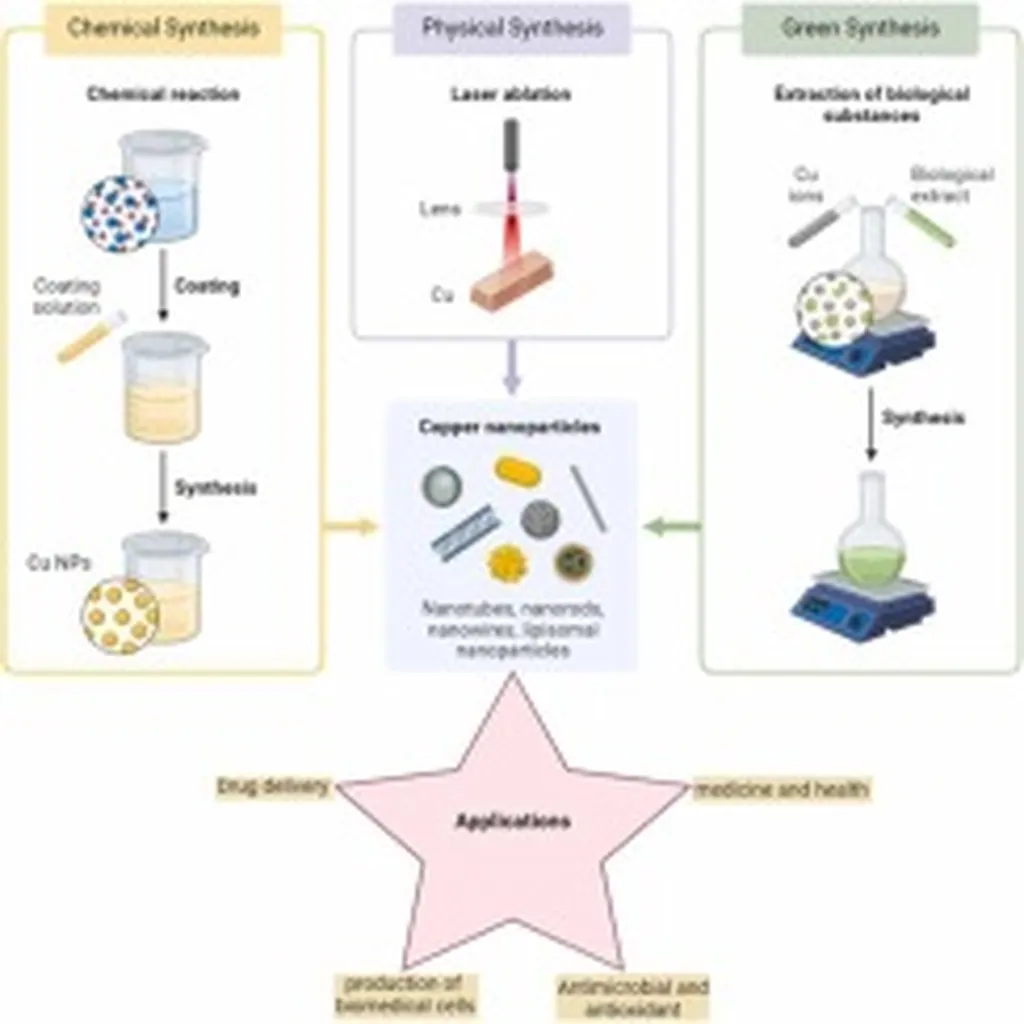In a significant stride towards sustainable agriculture, researchers have demonstrated the potential of green-synthesised copper oxide (CuO) nanoparticles to combat bacterial infections in crops. The study, published in *Nano Express*, reveals how the choice of precursor salts can tune the structural properties and antibacterial efficiency of these nanoparticles, opening new avenues for eco-friendly agricultural solutions.
The research, led by Lerato D. Msimango from the Department of Animal Science at North-West University in South Africa, explores the synthesis of CuO nanoparticles using three different precursor salts: copper nitrate, copper acetate, and copper sulfate. The resulting nanoparticles, denoted as CuO(1), CuO(2), and CuO(3), exhibited varying crystallite sizes, lattice parameters, and surface areas, all of which significantly influenced their antibacterial activity.
“Our findings highlight the importance of precursor selection in the green synthesis of CuO nanoparticles,” Msimango explained. “The precursor salt not only dictates the structural properties of the nanoparticles but also their effectiveness against bacterial pathogens.”
The study revealed that CuO(3), synthesised from copper sulfate, had the largest crystallite size and the lowest surface area, while CuO(1), derived from copper nitrate, had the smallest crystallite size and the highest surface area. Despite these differences, all three types of nanoparticles showed promising antibacterial activity against a range of crop-damaging bacteria, including Staphylococcus aureus, Streptococcus pyogenes, Escherichia coli, and Pseudomonas aeruginosa.
The minimum inhibitory concentration (MIC) values, which indicate the lowest concentration of nanoparticles required to inhibit bacterial growth, ranged from 0.031 to 0.50 mg/ml. These results suggest that green-synthesised CuO nanoparticles could be a viable alternative to conventional antibacterial agents, which often rely on harmful chemicals that can damage the environment and agricultural ecosystems.
The commercial implications of this research are substantial. With the growing demand for sustainable and eco-friendly agricultural practices, the development of green-synthesised nanoparticles offers a promising solution for controlling bacterial infections in crops without compromising environmental safety. Moreover, the precursor-dependent tuning of nanoparticle properties allows for the customisation of antibacterial agents tailored to specific agricultural needs.
As the agricultural sector continues to grapple with the challenges of food security and sustainability, innovations like green-synthesised CuO nanoparticles could play a pivotal role in shaping the future of crop protection. By minimising toxic by-products and energy consumption, these nanoparticles align with the principles of green chemistry, paving the way for a more sustainable and environmentally benign approach to agriculture.
The research, published in *Nano Express* and led by Lerato D. Msimango from the Department of Animal Science at North-West University, underscores the potential of green synthesis strategies in the development of effective and sustainable antibacterial agents for the agricultural sector. As the field continues to evolve, the precursor-dependent tuning of nanoparticle properties is likely to become a key focus, driving further advancements in the application of green-synthesised nanoparticles in agriculture.

